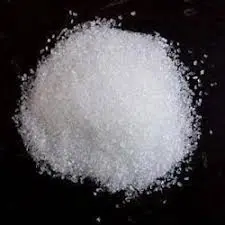IUPAC Name
Calcium Hydroxide
Cas Number
1305-62-0
HS Code
2522.20.00
Formula
Ca(OH)2
Appearance
White Crystalline Powder
Common Names
Slaked Lime, Hydrated Lime, Calcium Dihydroxide
Packaging
25 Kg Bag
Brief Overview:
Since calcium hydroxide easily combines with water to generate hydrated lime and carbon dioxide to form limestone, it can be found in nature as the mineral portlandite, though it is mainly produced industrially. Because this process is exothermic and generates a lot of heat, care must be given. The homogeneity of the matrix and the degree of crystalline mass cohesion and crystallization varies between calcium oxides.
Manufacturing Process:
Method 1: Calcium chloride is produced by reacting calcium carbonate with hydrochloric acid. Ammonia is then added for neutralization and let to stand until precipitation happens. After filtering the mixture, sodium bicarbonate is added to produce a precipitate of calcium carbonate.
Method 2: Burnt lime, or calcium oxide, is produced by thermally breaking down calcium carbonate at a higher temperature. To make calcium hydroxide on a commercial basis, calcium oxide is further processed or slaked with water:
CaO + H2O → Ca(OH)2
In this hydration reaction, which takes place in a continuous hydrator, the calcium oxide is broken down into tiny particles of calcium hydroxide. To guarantee uniform particle size, the sizes can be changed via milling.
Food Industry
Soft drinks and alcoholic beverages are made with calcium hydroxide. Fruits that are delivered to the grocery store are kept from ripening by the application of calcium hydroxide. It is also used in the preparation of lutefisk, a popular Swedish meal.
Sewage treatment Industry
Calcium hydroxide finds application in water and sewage treatment as a flocculant.
Other Applications
Ammonium chloride and calcium hydroxide are reacted to create ammonia gas. In the paper industry, it serves as an intermediary for the production of sodium hydroxide.
